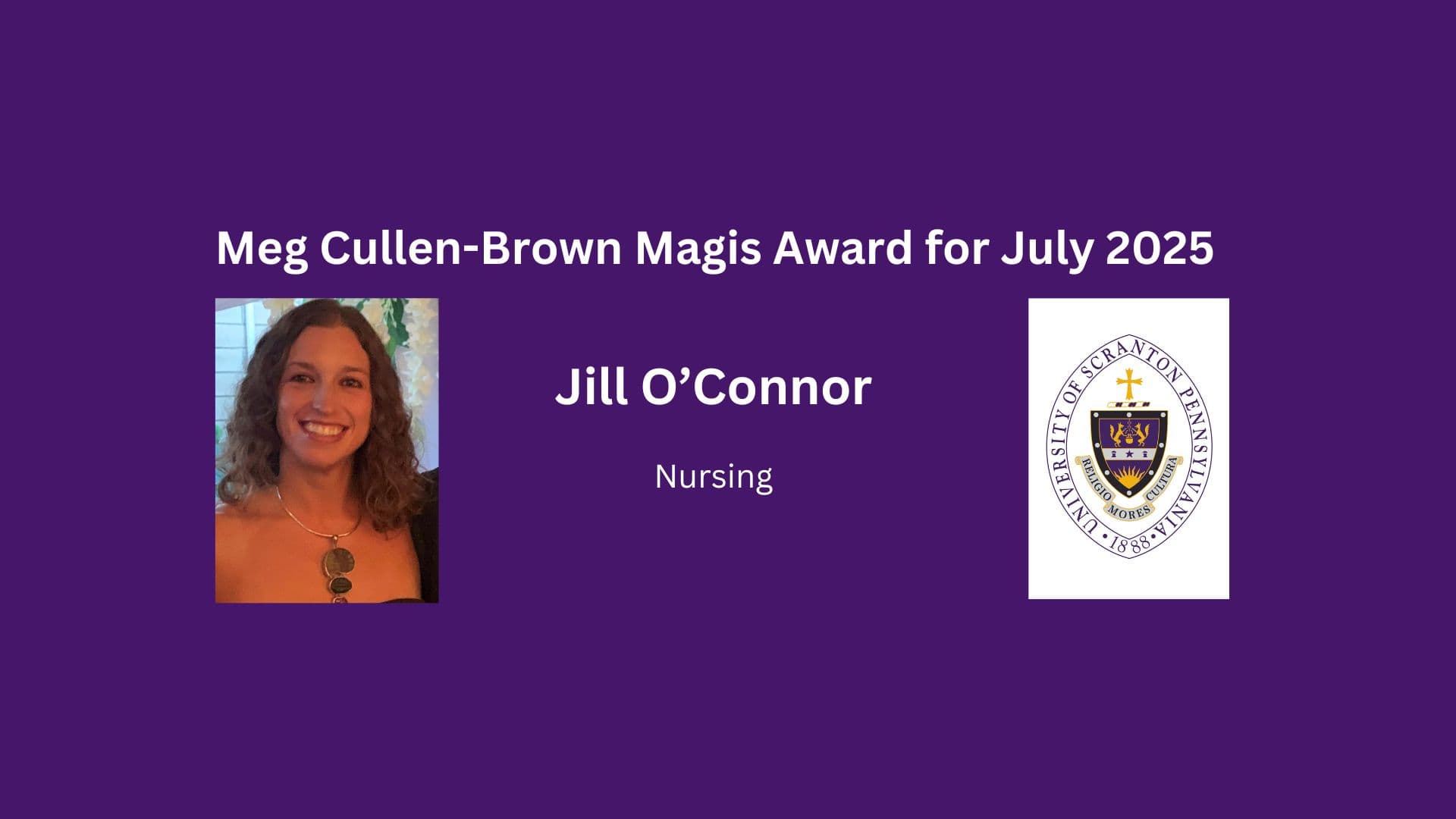Report on Higher Education Affordability and its Impact on Sustainable Development Goals in Northeast Pennsylvania
An analysis of the higher education sector in Northeast Pennsylvania reveals significant financial and structural shifts that directly impact the region’s progress toward key United Nations Sustainable Development Goals (SDGs), particularly SDG 4 (Quality Education), SDG 10 (Reduced Inequalities), and SDG 8 (Decent Work and Economic Growth).
Analysis of Tuition Increases and Institutional Pressures
For the 2025-26 academic year, ten higher education institutions across Lackawanna and Luzerne counties have announced tuition increases ranging from 2% to 6.8%. Institutional officials cite rising operational costs, including healthcare and insurance, as the primary drivers for these hikes. This trend presents a significant challenge to maintaining the financial sustainability of these institutions, a key component of providing stable, quality education (SDG 4).
State-Level Tuition Adjustments
- Pennsylvania State System of Higher Education (PASSHE): For the first time in seven years, the Board of Governors approved a 3.6% ($278) increase for in-state undergraduate tuition, bringing the annual cost to $7,994. This decision is contingent on state funding; the board has committed to rescinding the hike if its full funding request of $661.1 million is met, highlighting the crucial role of public investment in achieving SDG 4.
- Penn State University Commonwealth Campuses: While in-state undergraduate tuition remains unchanged, increases are set for other student categories. Out-of-state undergraduates and in-state graduate students will see a 1% increase, and out-of-state graduate students a 2% increase. These figures have also been approved for the 2026-27 academic year.
Impact on Sustainable Development Goal 4: Quality Education
The rising cost of tuition, coupled with institutional instability, directly threatens the core tenets of SDG 4, which aims to ensure inclusive and equitable quality education and promote lifelong learning opportunities for all.
Threats to Equitable Access and Institutional Viability
The changing higher education landscape in the region, marked by mergers and closures, underscores the fragility of educational infrastructure.
- Institutional Consolidation: Lackawanna College has merged with Peirce College, and Keystone College has merged with the Washington Institute for Education and Research. These mergers represent strategic efforts to maintain institutional viability (a prerequisite for SDG 4) amidst financial pressures.
- Institutional Closures: The closure of Clarks Summit University in August 2024 and the planned closure of seven Penn State campuses, including Penn State Wilkes-Barre, after May 2027, represent a direct loss of educational access and opportunity for communities in the region. These events challenge the goal of providing accessible education for all.
Institutional Responses and Mitigation Strategies for SDGs 1, 8, and 10
In response to affordability challenges, regional institutions are implementing measures that align with SDG 1 (No Poverty), SDG 8 (Decent Work and Economic Growth), and SDG 10 (Reduced Inequalities) by working to keep higher education an accessible pathway to economic mobility.
Financial Aid and Scholarship Initiatives (SDG 1 & SDG 10)
Institutions report that a majority of undergraduate students receive financial aid, a critical mechanism for reducing inequality.
- Targeted Support: King’s College’s Luzerne and Lackawanna Education Opportunity program covers full tuition and fees for students from families earning less than $50,000, many of whom are first-generation students, directly addressing SDG 10.
- Comprehensive Aid: The University of Scranton and Keystone College emphasize individualized guidance, a combination of institutional, federal, and state aid, and payment plans to make education attainable.
- Emergency Funding: The Presidential Hope Fund at King’s College provides a safety net for financially at-risk students, helping them cover tuition, books, and living expenses, which is vital for preventing dropouts and supporting SDG 1.
Workforce Development and Community Partnerships (SDG 8 & SDG 17)
Institutions are forging partnerships (SDG 17) to link education directly to regional economic needs (SDG 8).
- Community and Employer Partnerships: Luzerne County Community College (LCCC) offers tuition discounts for municipal employees and focuses on workforce training programs, which its Vice President of Finance noted are essential to preserve. Lackawanna College also leverages partnerships with high schools and employers to create debt-minimizing pathways for students.
- Incentivizing Local Employment: The Abigail Geisinger Scholars program at Geisinger Commonwealth School of Medicine offers tuition assistance and loan forgiveness for graduates who commit to practicing medicine locally for four years. This model directly supports SDG 8 by strengthening the regional healthcare workforce and providing graduates with debt-free, decent work.
Detailed Institutional Tuition Increases for 2025-26 Academic Year
The following list details the announced tuition adjustments by institution, reflecting the varied financial landscape impacting students in Northeast Pennsylvania.
- Geisinger Commonwealth School of Medicine: 2% increase. Annual in-state: $62,722; Annual out-of-state: $69,675.
- Johnson College: 2.6% increase ($500). Annual: $19,400.
- Keystone College: 2% increase ($320) for undergraduates. Annual undergraduate: $16,120.
- King’s College: 2.4% increase ($1,000) for undergraduates. Annual undergraduate: $43,000.
- Lackawanna College: 4% increase ($350). Annual full-time: $9,075.
- Luzerne County Community College: 3% increase ($5-$15 per credit hour depending on residency). Full-time resident semester: $2,325.
- Marywood University: 4.76% increase ($1,880) for undergraduates. Annual undergraduate: $41,370.
- Misericordia University: 6.8% increase ($2,600) for undergraduates. Annual undergraduate: $41,000.
- Penn State Commonwealth Campuses (Hazleton, Schuylkill, Scranton, Wilkes-Barre): No increase for in-state undergraduates. 1% increase for out-of-state undergraduates and in-state graduates; 2% increase for out-of-state graduates. Annual in-state undergraduate (Hazleton/Schuylkill/Scranton): $14,624 (lower division).
- University of Scranton: 3.25% increase ($1,730). Annual undergraduate: $54,938.
- Wilkes University: 3% increase ($1,246) for undergraduates. Annual undergraduate: $42,764.
Analysis of SDGs, Targets, and Indicators
1. Which SDGs are addressed or connected to the issues highlighted in the article?
-
SDG 4: Quality Education
This is the most prominent SDG in the article. The entire text revolves around higher education, specifically focusing on the accessibility and affordability of colleges and universities in Northeast Pennsylvania. It discusses tuition increases, financial challenges faced by institutions, mergers, closures, and various financial aid programs designed to help students afford their education.
-
SDG 8: Decent Work and Economic Growth
The article connects higher education to employment and workforce development. It mentions specific programs aimed at training the local workforce and creating pathways to employment after graduation, which directly relates to promoting productive employment.
-
SDG 10: Reduced Inequalities
The article addresses the issue of inequality in access to education by detailing the financial barriers created by rising tuition. It also highlights specific programs and policies aimed at reducing these inequalities, such as financial aid packages for low-income families and first-generation college students, thereby promoting social and economic inclusion.
2. What specific targets under those SDGs can be identified based on the article’s content?
-
SDG 4: Quality Education
-
Target 4.3: By 2030, ensure equal access for all women and men to affordable and quality technical, vocational and tertiary education, including university.
The article directly addresses this target by discussing the rising cost of tuition, which is a primary barrier to “affordable” tertiary education. It details the specific tuition increases at ten institutions. Furthermore, it describes the various measures colleges are taking to maintain “equal access,” such as offering “financial aid, scholarships and federally backed programs,” and creating special programs like the “Luzerne and Lackawanna Education Opportunity program” for students from low-income families.
-
-
SDG 8: Decent Work and Economic Growth
-
Target 8.6: By 2020, substantially reduce the proportion of youth not in employment, education or training.
Although the target date has passed, the principle is relevant. The article mentions Luzerne County Community College’s commitment to its “workforce training programs” as a core part of its mission. Additionally, the Abigail Geisinger Scholars program, which provides tuition assistance in exchange for a commitment to practice medicine locally, is a direct link between education and securing employment, thus reducing the number of graduates who might be unemployed.
-
-
SDG 10: Reduced Inequalities
-
Target 10.3: Ensure equal opportunity and reduce inequalities of outcome, including by eliminating discriminatory… policies and practices and promoting appropriate legislation, policies and action in this regard.
The article highlights actions taken by universities to ensure equal opportunity. King’s College’s program that “covers tuition and fees for students whose families earn less than $50,000 a year” is a direct policy action to reduce inequality of outcome based on economic status. The mention that “Many students in the program are first-generation college students” further supports this. The efforts by all colleges to provide “individualized guidance to help make a Scranton education attainable” and offer need-based aid are practical steps toward this target.
-
3. Are there any indicators mentioned or implied in the article that can be used to measure progress towards the identified targets?
-
Indicators for Target 4.3 (Affordable and Quality Tertiary Education)
- Cost of Tuition: The article provides precise data on tuition costs and percentage increases for numerous institutions (e.g., “increases range from 2% to 6.8%,” “Students will pay $7,994 annually” at PASSHE). This data directly measures the affordability of education.
- Proportion of Students Receiving Financial Aid: The statement that “the majority of undergraduate students receive some form of financial aid” is a qualitative indicator of the reliance on and provision of financial support to make education accessible.
- Enrollment and Graduation Rates: The article mentions that enrollment at several universities “has remained steady and increased for first-year students” and provides a specific graduation rate for Misericordia University (“between 67% and 72% of students graduate between four and six years”). These are key indicators of participation and successful completion of tertiary education.
-
Indicators for Target 8.6 (Youth in Employment, Education, or Training)
- Existence of Workforce Training Programs: The mention of “workforce training programs” at Luzerne County Community College serves as an indicator of institutional efforts to link education directly with skills for employment.
- School-to-Work Transition Programs: The “Abigail Geisinger Scholars program” is a measurable program that transitions students directly into local employment, indicating a successful outcome in reducing the gap between education and work.
-
Indicators for Target 10.3 (Equal Opportunity)
- Financial Aid Programs for Disadvantaged Groups: The existence of specific programs like the “Luzerne and Lackawanna Education Opportunity program” for families earning less than $50,000 is a clear indicator of policies designed to reduce economic inequality in educational access.
- Amount of Financial Assistance: The article mentions specific financial awards, such as King’s College offering “$2,500 on top of merit-based awards” for students from certain schools, which can be quantified to measure the level of support provided.
4. Summary Table of SDGs, Targets, and Indicators
| SDGs | Targets | Indicators |
|---|---|---|
| SDG 4: Quality Education | Target 4.3: Ensure equal access for all to affordable and quality tertiary education. |
|
| SDG 8: Decent Work and Economic Growth | Target 8.6: Substantially reduce the proportion of youth not in employment, education or training. |
|
| SDG 10: Reduced Inequalities | Target 10.3: Ensure equal opportunity and reduce inequalities of outcome. |
|
Source: thetimes-tribune.com







